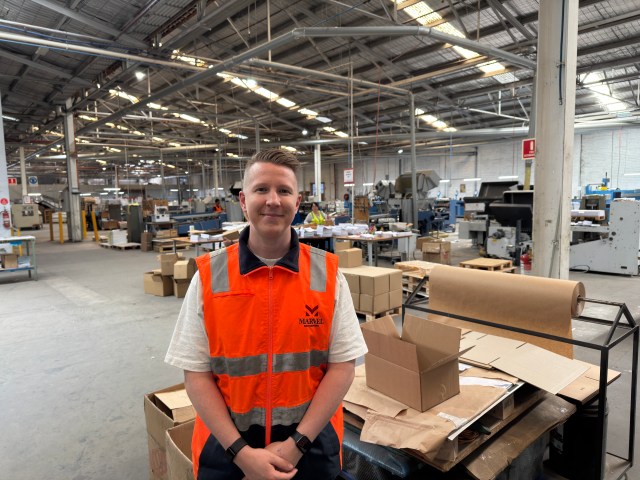
This article appeared in the March 2025 issue of Australian Printer, authored by Mint Imaging’s Adam Middleton
2024 was an exciting yet challenging year for Mint Imaging and the industry. We continued to push the boundaries of innovation, collaborated with industry colleagues, and worked closely with our clients to develop groundbreaking products.
However, we also faced one of the most pressing challenges in the industry – staffing. One of the biggest concerns for the print and signage sector remains attracting and retaining skilled workers. The industry has seen a significant skills gap as experienced professionals retire, and fewer young people consider print as a viable career path. This challenge only intensified in 2024, with many businesses struggling to find and retain the right talent.
At Mint Imaging, we firmly believe the future of the industry depends on making print and signage more appealing to younger generations. We must work collectively as an industry to showcase the creativity, technology, and opportunities that exist in print. Whether it’s through apprenticeships, educational outreach, or demonstrating the high-tech nature of modern printing, we need to invest in the next generation of print professionals.
As we move into 2025, Mint Imaging’s primary focus will be on efficiency and autonomous business operations. We aim to streamline processes across the entire production cycle, working closely with our suppliers to optimise stock ordering, production workflows, and delivery – all while maintaining the high-quality standards our clients expect. Automation and operational efficiency will be at the core of our strategy, ensuring faster turnaround times without compromising on precision and craftsmanship.
We’re also making significant strides toward sustainability in 2025 by taking a multi-faceted approach to both environmental responsibility and operational efficiency. At the heart of this commitment is a major investment in cutting-edge, energy-efficient equipment designed to use less power while improving production quality.
We also aim to fully power our factory with solar energy, significantly reducing our carbon footprint and reinforcing our dedication to green practices. We’re also refocusing our customer offerings toward eco-friendly products.
More broadly speaking, sustainability will become a business imperative, as companies face growing pressure to prove their environmental credentials.
2025 will be a challenging year for the industry, with economic uncertainty, rising costs, and shifting client demands requiring businesses to be more agile than ever.
Companies that rely too heavily on a single revenue stream will struggle, making diversification essential. Print businesses will need to expand their offerings by integrating digital solutions, providing installation services, or developing specialty products such as grand format lenticular printing, fluorescent inks, and interactive signage.
At the same time, automation and AI will become critical differentiators, widening the efficiency gap between those who invest in AI-driven workflow solutions and those who don’t. From prepress to finishing, AI will help reduce waste, improve turnaround times, and lower costs, giving forward-thinking businesses a competitive edge.
As static print becomes less effective, experiential and interactive print will continue to grow, with brands demanding more tactile and immersive experiences. Innovations such as invisible ink billboards, augmented reality (AR) print, and motion- based lenticular designs will gain traction, setting businesses that push creative boundaries apart from the rest.
Supply chain instability will also make local manufacturing more important than ever. Print businesses that can offer faster turnaround times and reliable, localised production will have a significant advantage over those dependent on offshore suppliers, as clients prioritise service and dependability over the lowest price. In an industry undergoing rapid transformation, success in 2025 will depend on adaptability, innovation, and a commitment to sustainability and efficiency.
In 2025, businesses should focus on several key areas of growth to stay competitive and capitalise on emerging trends, including promotional printing and branded merchandise, the demand for personalisation, the rise of experiential marketing, Print-on-demand (POD) and e-commerce integration, smart and interactive printing, and connected packaging.
On a final note, as a close-knit industry, we have a unique and powerful opportunity to collaborate, innovate, and support one another in ways that can drive greater profitability and growth for all. By sharing knowledge, leveraging each other’s strengths, and working together on sustainability and technological advancements, we can elevate the entire sector.
We’re not just competitors; we’re part of a community where collective growth can lead to a stronger, more resilient industry. Let’s embrace this opportunity to build lasting partnerships, share best practices, and work towards common goals because when we support each other, we all thrive. The future of print is bright, and together, we can make it even brighter.
Comment below to have your say on this story.
If you have a news story or tip-off, get in touch at editorial@sprinter.com.au.
Sign up to the Sprinter newsletter



